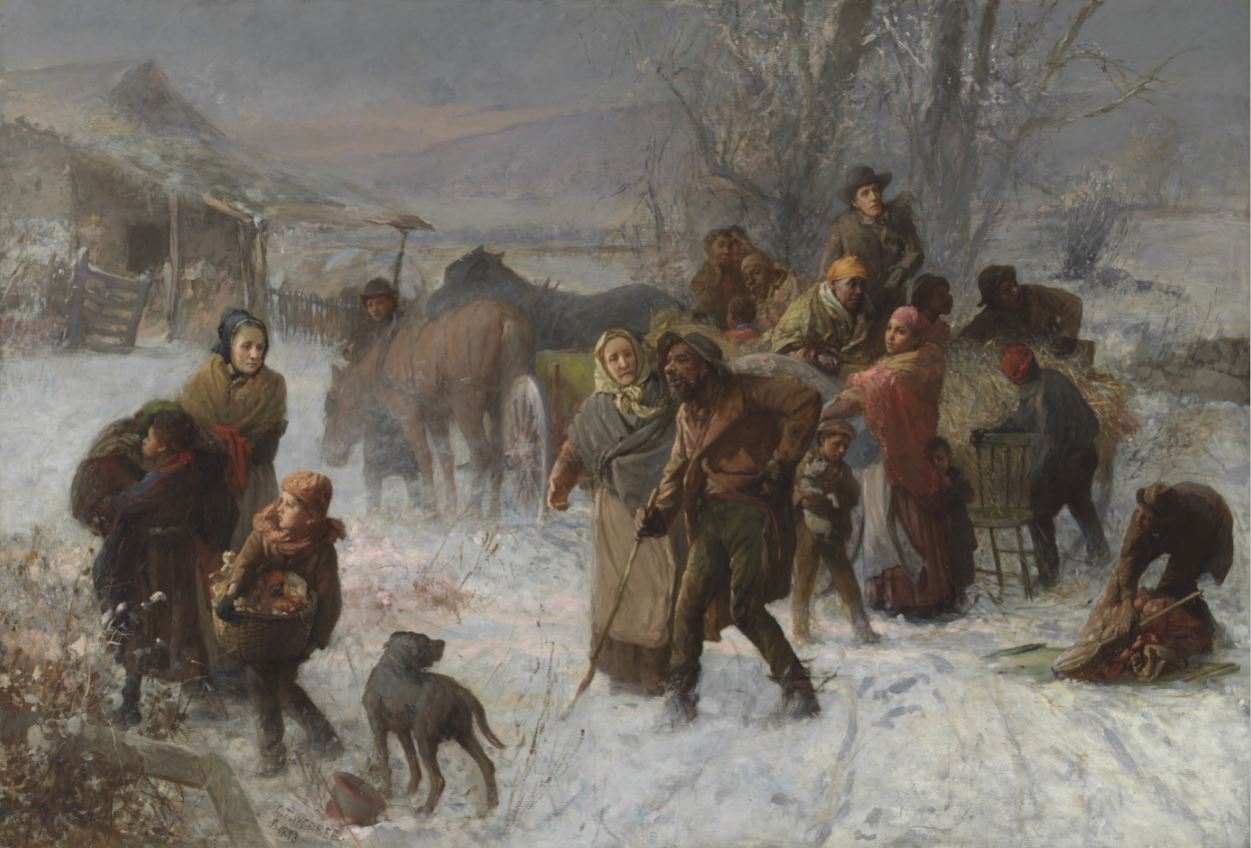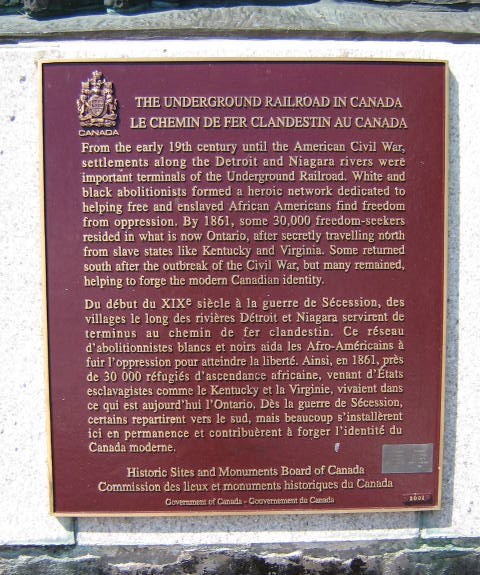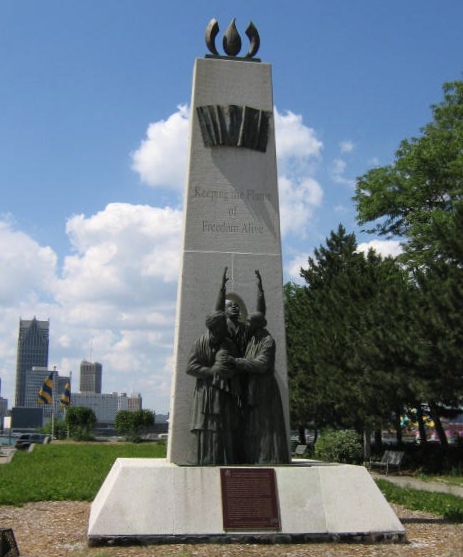Underground Railroad National Historic Event

The Underground Railroad in Canada was designated a national historic event in 1925.
Historical importance: Network dedicated to helping free and enslaved African Americans find freedom.
Commemorative plaque: 200 Pitt Street East, Windsor, OntarioFootnote 2
The Underground Railroad in Canada
From the early 19th century until the American Civil War, settlements along the Detroit and Niagara rivers were important terminals of the Underground Railroad. White and black abolitionists formed a heroic network dedicated to helping free and enslaved African Americans find freedom from oppression. By 1861, some 30,000 freedom-seekers resided in what is now Ontario, after secretly travelling north from slave states like Kentucky and Virginia. Some returned south after the outbreak of the Civil War, but many remained, helping to forge the modern Canadian identity.

© Parks Canada, 2004

© Parks Canada, 2004
The National Program of Historical Commemoration relies on the participation of Canadians in the identification of places, events and persons of national historic significance. Any member of the public can nominate a topic for consideration by the Historic Sites and Monuments Board of Canada.
Related links
- National historic designations
- National historic persons
- National historic sites designations
- National historic events
- Submit a nomination
- This Week in History: Reverend Jennie Johnson (1868–1967)
- Heritage Minutes: Underground Railroad (Historica Canada)
- The Canadian Encyclopedia: Underground Railroad
- Harriet Tubman National Historic Person
- Salem Chapel British Methodist Episcopal Church National Historic Site
- Thornton and Lucie Blackburn National Historic Persons
- Date modified :